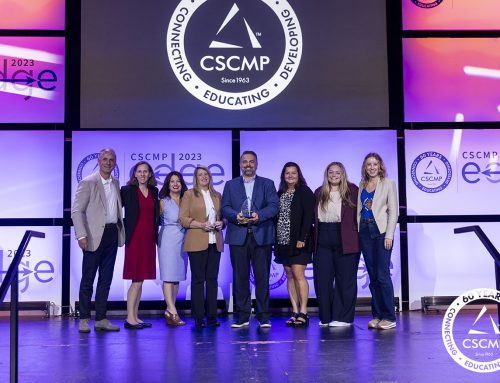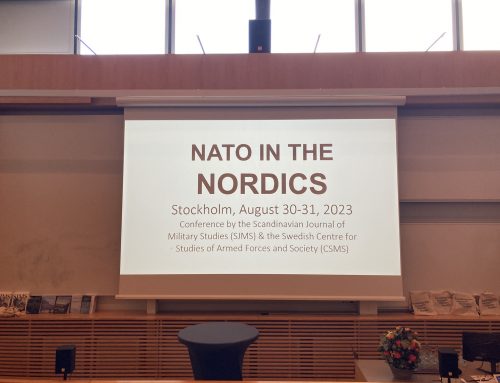19.02.2021
Today it’s time for our fifth and last blog post in the blog series including 5 articles presenting the results of the science competition organised by the Global Business School Network and the HUMLOG Institute at Hanken School of Economics: The HUMLOG Challenge. Below you find the blog text written by the team representing Universidad de los Andes, Colombia. Team Los Andes was the winning team of the entire competition.
Team Los Andes
Johary Azizi Perez Duran, Maria de los Angeles Olave Solano, Diana Carolina Amaya Giraldo
HOW FOG CATCHERS BECOME A FEASIBLE WATER ALTERNATIVE IN THE GUAJIRA DESERT
It happens to be evident that there is no life without water. As Da Vinci said ‘Water is the driving force of all nature’, and the access to clean water is the driving force that assures development for the communities. For the HUMLOG CHALLENGE, we felt motivated by the idea of taking into consideration one of the most vulnerable indigenous communities in Colombia: Wayuus, and the ongoing struggle of their water supply chain. They live in the department of La Guajira in Colombia which it is one of the most desert areas of the country, despite of being next to the Caribbean Sea. This place has been profoundly affected by armed conflict, poverty and most recently, Venezuelan migration.
More than 380,000 indigenous of the Wayuu community live in the scattered rural areas of hard reach. They live in settlements called rancheria, a system of units of families defined by a collective yard, gardens, a cemetery and small farm to keep the animals. Their main economic activity is the selling of handcrafts accessories and tourism. Regarding the water procurement in the rancheria, Wayuus count with windmills and jagueys.
In search of a better understanding and in order to observe the root causes of their highly fragile water supply chain, we decided to travel to the field and interview members of different sides of the story, such as state associates and the community. Many alternatives have been suggested to mitigate the effects of the disruption, however the impact has not reached to the whole community and there are still many lacking of access to the liquid. The most vulnerable are the children and the nursing mothers.
The water supply chain in La Guajira consists in four factors, first factor is the distribution by tank trucks that transport drinking water with a capacity of 5000 liters and a value of around USD 39, which Wayuus must bear. It lasts a week and it covers five families of a rancheria. However, because of the inadequate road infrastructure and the dispersion of rancherias, it cannot reach to the whole community. The second factor are the wells of salty water that is obtained by windmill pumping, but this water is not fit to drink and it’s barely good for the household activities due to the salt. Plus, it depends on the wind. The Jagueys are the third factor which are artificial wells made of stuck and unsanitary water from the rain that comes only one or two months of the year. This water is used by animals and humans and the last one and mining companies that only provide water to their areas of influences, means to some areas where the community located over the surroundings of their railways.
This is a highly fragile and vulnerable supply chain, which does not reach to every consumer and where the water demand has increased due to Covid-19 and Venezuelan migration. According to United Nations, the sustainable development goals are a collection of 17 interlinked goals designed to a be a blueprint to achieve a better and more sustainable future for all. One of them is clean water and sanitation. Water is important not only to health, but also to reduce poverty, food security, peace and human rights, ecosystems and education. However, countries face growing challenges related to water pollution, water scarcity and degraded water-related ecosystems, and Colombia is not the exception. In addition, funding gaps and weak government systems hold many countries back from making needed advances.
This is why helping the Wayuu community mitigate the effects of lack of water, might improve their lives for a better future and might help prevent the spread of Covid-19. According to the U.N., before Covid-19, 2.2 billion people lack safely managed drinking water worldwide and also two in five health care facilities did not have water and alcoholbased soap. It’s important to mention that in La Guajira, only 4% of the rural population has access to drinking water and only 26% of its population has access to water which is fit for human consumption.
Currently, during the pandemic Covid-19, it’s estimated that 3 billion people worldwide lack basic handwashing facilities at home, being handwashing is one of the cheapest, easiest and most effective ways to prevent the spread of the virus. Colombia has 12.516 cases of Covid-19 and in la Guajira only were detected 54 cases, they are rising day by day, reason why it’s very important to ensure to follow the biosafety protocols like hand-washing.
Therefore, our proposal consists in the implementation a fog catcher which are made of a fine mesh known as Raschel net, set up on foggy slopes to catch suspended drops of water, which gather and merge, running through small gutters to collection tanks. For the installation of the fog catcher, it was necessary to revise the meteorological stations available in the database of IDEAM where data was collected from 2007 to 2020, in some municipalities of La Guajira. A fog catcher is considered a sustainable solution and it has many advantages such as it is a simple device and does not imply changes in their culture of the indigenous as they prefer more traditional ways, It is economical and technically feasible because the materials would exist in the region, making the process of procurement manageable and finally it is ecofriendly, because it does not generate pollution and the materials of the structure, such as galvanized steel and the net can be reused. Also, its useful life is 10 years. Although fog traps are not a definitive solution, they could be helpful in places where there is little or no drinking water, and it would be an additional aid to the
water supply chain and the continuing challenge of water shipping. Accordingly, the commitment guides us to keep on looking for sustainable logistics solutions in order to deliver the primary needs which these communities lack and which generally are taken for granted.




